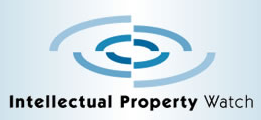 Kaitlin Mara of IP Watch has an interesting article up on patent landscapes which covers some of the major concerns of developing countries. The article is mostly a recap of an April 7-8 event at WIPO entitled “Symposium on Public Policy Patent Landscaping in the Life Sciences” the discussions at the event covered everything from the basics of patent landscapes to the real challenges of a multilingual patent system with no central repository of prior art, the article even includes the need to add blog entries and other “gray” literature into the mix of sources that patent examiners review before granting patents. The article is entitled Experts Discuss Policy On Patent Landscapes For Life Sciences.
Kaitlin Mara of IP Watch has an interesting article up on patent landscapes which covers some of the major concerns of developing countries. The article is mostly a recap of an April 7-8 event at WIPO entitled “Symposium on Public Policy Patent Landscaping in the Life Sciences” the discussions at the event covered everything from the basics of patent landscapes to the real challenges of a multilingual patent system with no central repository of prior art, the article even includes the need to add blog entries and other “gray” literature into the mix of sources that patent examiners review before granting patents. The article is entitled Experts Discuss Policy On Patent Landscapes For Life Sciences.
More information and an excerpt from the article after the jump:
Victoria Henson-Apollonio, from the Consultative Group on International Agricultural Research’s (CGIAR) Central Advisory Service on Intellectual Property, pointed out that analysis of information in patent databases is only part of the story for policymakers.
Citing a well-known case involving “Enola beans” in which a man named Larry Proctor patented a bean he had selectively bred to exhibit a specific shade of yellow, she noted that it is difficult to find a common language that might describe prior art in this case, as there is no standardised colour reference for plant breeders. The patent claims include any common bean “that is completely yellow in colour” as defined by the “Munsell Book of Colour,” which Henson-Apollonio pointed out was not a widely used reference among plant breeders. There is also a need to include “grey” literature – works in print but not officially published, for example academic working papers, newsletters, brochures, government briefings, blog entries or business manuals – as much as possible in databases used by patent examiners, she said.
There also was discussion as to whether the distinction between public ownership and private ownership of patents hinted inappropriately that data owned by, for example, universities was more likely to reach the general public than that owned by companies. Jensen said that the lack of incentive to commercialize in the public sector means privately owned IP is likely to be in public hands faster.
Also a problem, said Pierre Roger, IP manager of Limagrain, a French seed company, is that while tools are available to find patent data, the quality and reliability of that data, as well as the cost of access to it, is very unequal. Fred Abbott, professor of international law at Florida State University College of Law, said that even major information portals have their shortcomings. The Orange Book, the US Food and Drug Administration’s index of patents on approved drugs, is “an invaluable source of research leads” said Abbott, but lacks data on medicines patented outside the United States.
Another problem is the intricacy of life science patents in general. Roger said that the patent thicket on plant varieties is particularly complex: patents can apply to a plant variety: everything from lab techniques used to develop it – including molecular markers, DNA extraction and cloning – to the addition of genetically engineered compounds, the use of microbiological processes such as agrobacterium, and finally to the product itself.
The full article can be found at IP Watch : Patent Landscape

